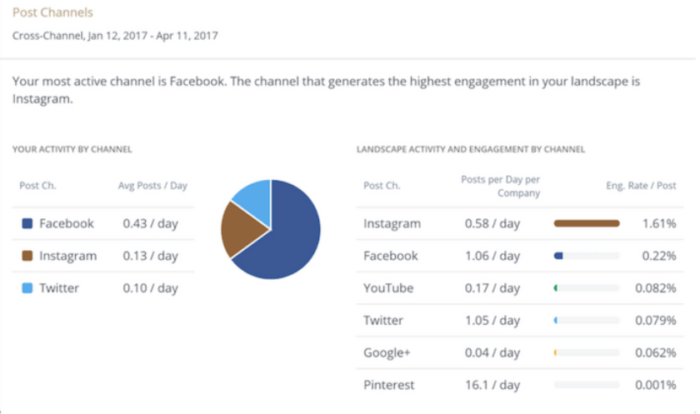Sometimes it feels like the marketing landscape is flooded with social media agencies.
So how do you showcase what makes your agency valuable and unique in just a 30-minute client pitch meeting? Our value as an agency doesn’t come with a neon superstore discount; it lies in the intangibles like talent, motivation, and flexibility. To close businesses, we focus on showcasing what it will actually be like to work with us as an agency
1. Be prepared.

Showing up prepared to the client pitch meeting is number one on the list because it should be obvious, but is often overlooked. Before you meet with a client, conduct a social media and content audit. You can’t know what to fix without first understanding what’s broken. Don’t shine the hubcaps before fixing the engine! Be prepared; know where they are and where you think they should be, based on the information you gather and analyze before your meeting. It’s important we show our potential clients that we are always prepared.
How to prepare for a client pitch meeting:
- Complete a thorough examination of their website, focusing on their blogs and other forms of content marketing.
- Investigate their and their competitor’s social media presence across all major channels.
- Send them a short top-level survey before your meeting to compile a list of their competitors, complementary industries, and company concerns.
- Prepare a list of questions about their business you would like to ask during your meeting.
2. Be transparent.

Be transparent with your clients about how you approach social media and how you conduct business. It’s important, not only for them but you as well. If you’re not clear about your values, strategy, and method of operation, it’s easy to fall into an ill-fitting client relationship by accident. Be firm and ask the right questions to make sure you’ll be a good fit for each other.
We include our company’s core values and philosophies in our pitch deck so that the client has a clear idea of how we operate before we begin working with them. Consider the best way for you to give potential clients an authentic look into your business in a way that allows them to make a fully informed decision about doing business with you.
3. Listen more than you talk.

The true test of a great marketer is how much they listen and learn, not how many words they can monolog before they’re cut off. Anyone can follow social media best practices, but it takes an in-depth knowledge of marketing theory and industry knowledge to create a fruitful marketing strategy. How can you make social media recommendations before understanding the client’s ideal customer? Understanding the client’s customer life cycle, their primary competitors, and their marketing initiatives is imperative to creating a successful marketing strategy for them. During your pitch, it is easy to fall into the trap of speaking more than listening. Use this opportunity to ask questions and understand the root of their challenges and goals.
4. Be empathetic.

Even if your best friend, the office dog, and grandmother have a Facebook profile, don’t assume everyone else does. Many people either choose not to be on Facebook or don’t know how to use it, much less understand how to use the platform to promote a business. It’s important to not make assumptions about a business owner’s digital marketing literacy, as it can wildly vary.
A recent study by Pew Research found that about 12% of people in America between the ages of 50 and 64, and 37% of those 65 and older don’t use the Internet regularly. They also discovered that about 30% of Americans, don’t have the Internet in their homes. With that in mind, when you consider that the average business owner is about 50 years old, it’s in your best interest to think twice before suggesting that they ‘follow’ you. Ask questions to help you understand where your client is coming from before you make assumptions.
5. Don’t leave them empty handed.

We want our potential clients to know that we genuinely care about their business, even if they don’t choose to hire our agency. We show them we care by leaving them with a list of personalized marketing action items. We found that leaving them with a social competitive analysis gives us the opportunity to demonstrate value and vision without giving away the whole cow. Ever since we started giving away this report as a part of our initial consultation, we’ve seen an overwhelming return on the small upfront investment.
Conducting an in-depth social competitive analysis can sound like a daunting task, and it can be. If you equip yourself with the right tools, conducting a competitive analysis can be streamlined and scalable. We use Rival IQ to provide us with information for our competitive analysis. With Rival IQ, it is simple to do the analysis and export a pre-made, branded, PowerPoint presentation or PDF that has everything needed to display the information to our potential clients. The complete landscape report that we can easily generate gives in-depth insights into social media and search engine optimization.
Have you ever run a race where you come around a corner to see your competition leading by just a few meters? It lights a fire. Seeing your competition losing you in their dust, or gaining on you from behind is a huge motivator. The same is true in business. When you can give potential clients a clear idea of how they stack up to their competition, it’s easy to show them why (and where) they should make a change.
For example, by using the data we pulled on one client’s competitors using Rival IQ, we were able to show them social metrics that illustrated a clear need for their company to invest more time, effort, dollars, and creativity into Instagram. The data shows that their competition consistently experiences higher engagement rates on Instagram than they do on Facebook. Since they share the same target market with their competitors, we would suggest that based on this data they are missing out on reaching and engaging with their target audience on Instagram. We can also see that they currently post to Instagram 0.13 times a day (about once every eight days). However, their competitors post on Instagram 0.58 times per day (about once every other day), so they should try increasing their posts on Instagram to a few times per week to increase their share of voice, total engagement, and engagement rates.

After analyzing the full report, we pull all the action items on a short list that we include in our meeting follow-up email, along with any meeting notes or requested information.
The landscape for marketing agencies is broad and profound, but incorporating these five best practices can (and will) help you stand out from your competition. We’ve found that when we adhere to these five best practices, we can close business and grow our agency because it gives potential clients a real sense of what it’s like to truly be a client of ours. We use data to drive change in our business, and we demonstrate this in our client pitch. By showing up to meetings prepared with proof of our value, we can spend more time learning about the client, drinking coffee, and building relationships, and less time convincing potential clients that they want to work with us.
